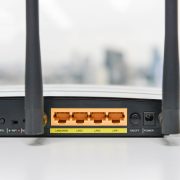There’s a lot going on in virtual data centers. In security, we’re hearing many variations of the term “micro-segmentation.” (It originated from VMWare, but has been adopted by other players, some of them adding top-spin or over-spin.)
We know what segmentation is. Every enterprise network practices segmentation between outside and inside, at least. Most aim to have a degree of internal segmentation, but I see a lot more planning than doing — unless an audit is on the line. Many networks have a degree of segmentation around the assets that auditors pay attention to, such as patient records and credit cards. There are organizations further up the security sophistication curve who have a solid zone-based division of their business, can articulate what each zone does and what should go on between them, and have a degree – at least some degree – of enforcement of inter-zone access. But these tend to be large, complex companies, so each zone tends to be quite large. It’s simple math – if you try to track N zones, you have to think about N2 different relationships. That number goes up fast. Even well-staffed teams struggle to keep up with just a dozen major zones in a single network. That may not sound like a lot, but the typical access open between any two zones can easily exceed half a million communicating pairs. Auditing even one of those in full depth is a super-human feat.
Now along comes the two horses pulling today’s IT chariot: the virtual data center and the software defined network. These offer more segmentation, with finer control, all the way down to the workload (or even lower, depending on which marketing teams you believe). This sounds great – who wouldn’t want super-fine controls? Nobody believes the perimeter-only model is working out any more, so more control must be better, right? But in practice, if you just throw this technology onto the existing stack without a plan for scaling, it’s not going to work out.
If you start with a hard-to-manage, complex management challenge, and you respond by breaking it into ever smaller pieces, spread out in more places, you can rapidly end up like Mickey Mouse in The Sorcerer’s Apprentice, madly splitting brooms until he’s overrun.
Is it hopeless? Certainly not. The issue is scale. More segmentation, in faster-moving infrastructure, takes a problem that was already tough for human teams and makes it harder. But this happens to be the kind of problem that computers are very good at. The trick is to realize that you need to separate the objective – what you want to allow in your network – from the implementation, whether that’s a legacy firewall or a fancy new GUI for managing policy for virtual workloads. (In the real world, that’s not an either/or – it’s a both, since you have to coordinate your virtual workload protections with your wider network, which stubbornly refuses to go away just because it’s not software defined.)
That is, if you can describe what you want your network to do, you can get a big win. Just separate your goals from the specific implementation – record the intention in general terms, for example, in the zone-to-zone relationships of the units of your business. Then you can use automation software to check that this is actually what the network is set up to do. Computers don’t get tired – they just don’t know enough about your business or your adversaries to write the rules for you. (I wouldn’t trust software to figure out how an organism like a business works, and I certainly wouldn’t expect it to out-fox an adversary. If we can’t even make software to beat a Turing Test, how could an algorithm understand social engineering – still a mainstay of modern malware?)
So I’m not saying micro-segmentation is a bad thing. That’s a bit like asking whether water is a bad thing – used correctly, it’s great, but it’s important not to drown. Here, learning to swim isn’t about the latest silver bullet feature of a competitive security offering – it’s about figuring out how all your infrastructure works together, and whether it’s giving the business what’s needed without exposing too much attack surface.

